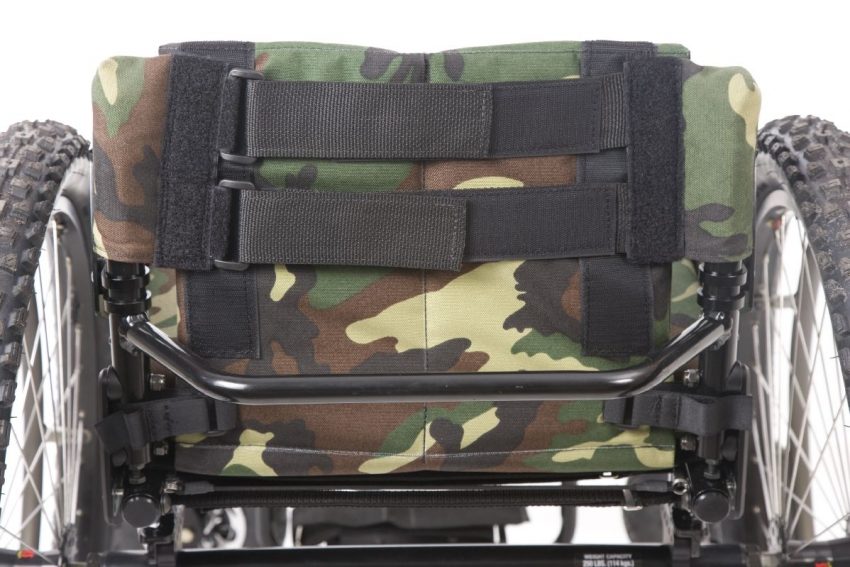Your wheelchair back upholstery selection, and how that functions, holds just as much importance as the design of the rest of your chair. The frame style of your wheelchair back is foundational, and the fabric you choose isn’t just for decoration, it affects both back support and comfort.
Tension Adjustable Wheelchair Back Upholstery
Have you ever noticed that some wheelchair backs have horizontal hook-and-loop bands that are covered with fabric? These are velcro tension adjustable back upholstery. Tension adjustable backs are a support system that can be adjusted.
There are two reasons you might want to choose this type of back:
- It accommodates postural deviations.
- It can be re-tightened as your posture (or needs) change.
The benefit to having this type of wheelchair back upholstery is that you don’t have to order a whole new seat back if the support feels too loose. All you have to do is re-adjust the bands. And the fabric is usually a breathable nylon mesh. So this type of back upholstery is not just adjustable, it’s also comfortable and lightweight. It can help avoid skin breakdown from sweat.
Before attempting to adjust the tension, please make sure you consult your user’s manual on proper technique. This will reduce possible difficulties and frustrations, and ensure that the adjustments are made properly.
Materials
Back supports are made from all types of materials. Some start with an aluminum shell but most have a carbon fiber shell beneath. This may affect what type of wheelchair back upholstery you may choose. Are you going for strength and support or the lightest weight you can find?
Underneath the outer layer of fabric, you will also need to consider the foam. There are different types of foam, and different ways it can be layered. The type and arrangement of foam will change the level of support, and how comfortable you feel.
The fabric cover is the last part of the upholstering process. Covers come in a variety of different fabrics, which have different qualities. Some fabrics are more breathable than others. Others provide moisture resistance or have antibacterial properties. Some have extra durability. Others are are more decorative.
The Differences Between Vinyl and Nylon
Vinyl and nylon are your two most common fabric choices for wheelchair back upholstery. Nylon tends to be more breathable. It is synthetic and looks like a woven fabric. It’s usually found on lighter chairs or rehab chairs since it is a little more expensive than vinyl. Nylon also takes longer to reach maximum heat reflection, which helps insulate the user.
A negative quality of nylon is that it is harder to clean. The porous surface absorbs spills and body fluids, which means you may have to replace it more frequently.
Vinyl is a non-woven synthetic fabric. It was created to simulate leather. Vinyl chair backs are not usually found on chairs that you use for everyday or rehab use. Vinyl is typically found on hospital wheelchairs or those used in institutional settings.
It’s not porous, like nylon, which makes you more likely to sweat. But unlike nylon, it is easy to clean. If you have frequent problems with spills or incontinence, nylon may be a smart choice because it can be disinfected, and therefore will stay cleaner longer before having to be replaced.
Making a Wheelchair Back Upholstery Selection
When making a selection, consider your health needs first. Consult with your healthcare team, physiotherapist, and equipment representative. They can help you choose an upholstery style that will keep you in optimum health.
Beyond those practical considerations, take a look around the internet to see if there’s something you can add on that’s creative and suits your style. Check Etsy to see if someone is selling custom slipcovers or decorations for your wheelchair back. You don’t want the cover to change the function of the wheelchair back upholstery of your chair, but you may be able to cover it with a light fabric to add a little fun.
Author: Annie Beth Donahue is a professional writer with a health and disability focus.
